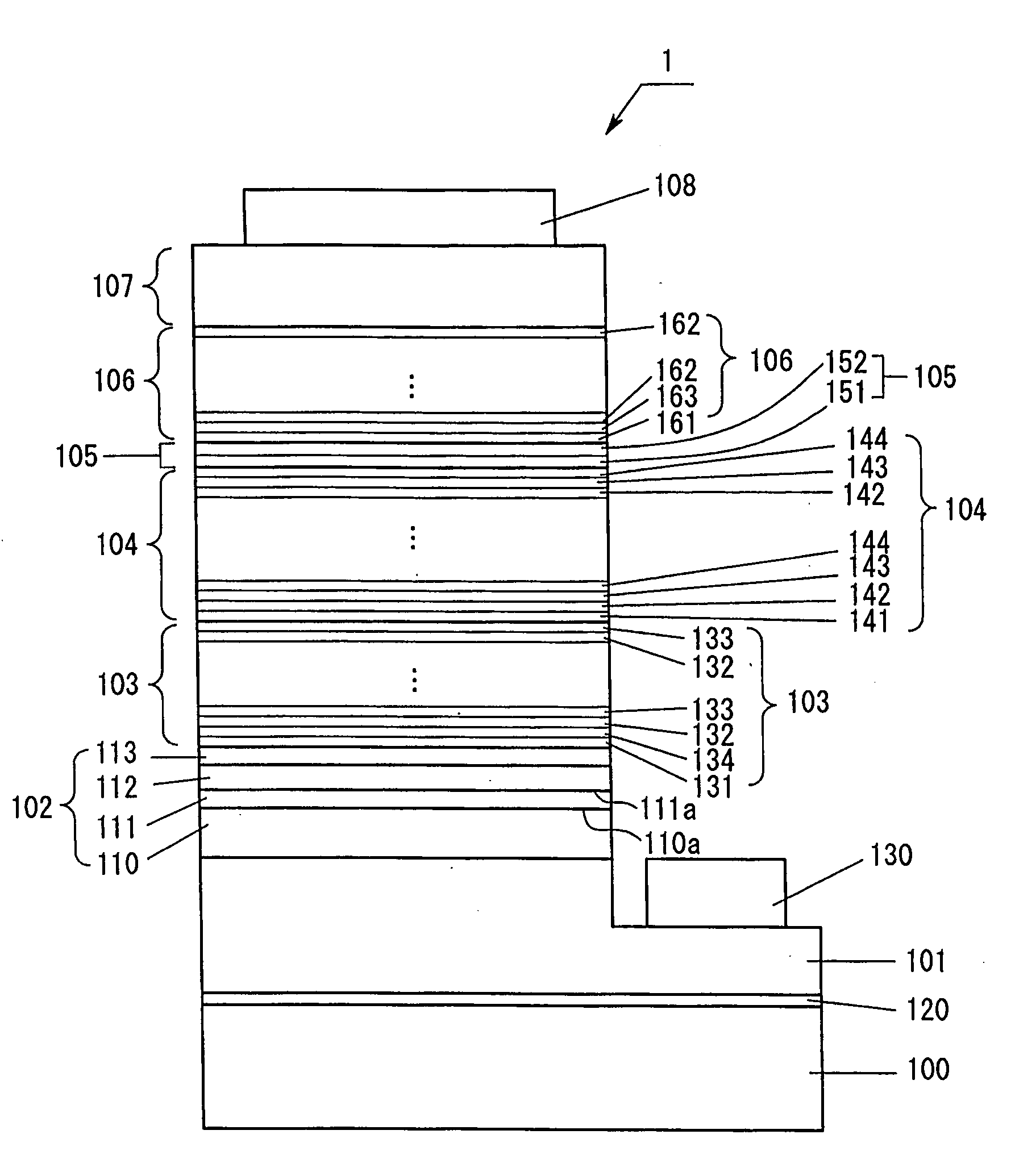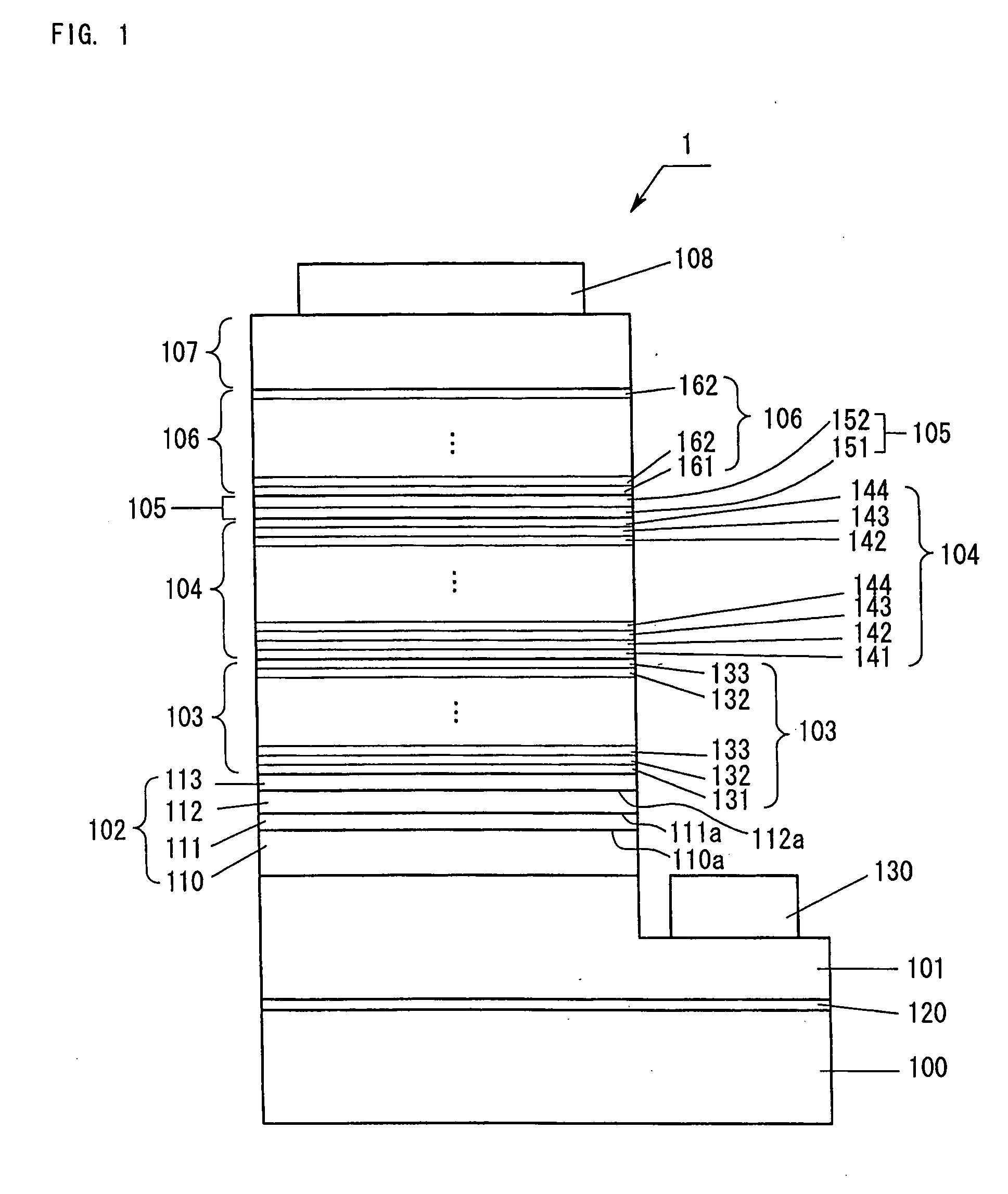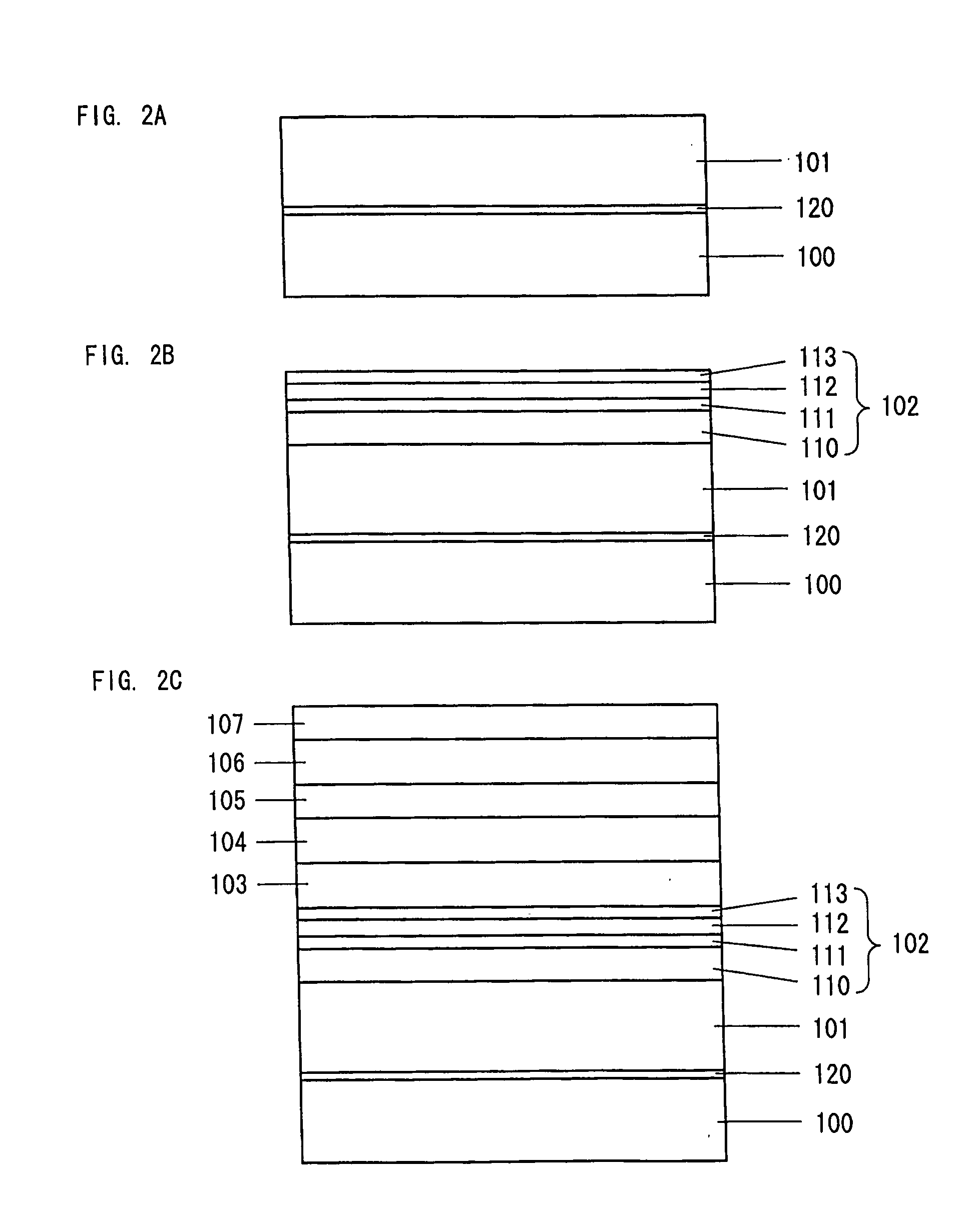Group lll nitride semiconductor light-emitting device
- Summary
- Abstract
- Description
- Claims
- Application Information
AI Technical Summary
Benefits of technology
Problems solved by technology
Method used
Image
Examples
embodiment 1
[0027]FIG. 1 shows the configuration of a light-emitting device 1 according to Embodiment 1. The light-emitting device 1 has a structure including a sapphire substrate 100; an AlN buffer layer 120; an n-type contact layer 101, an ESD layer 102, an n-type-layer-side cladding layer (referred to as “n-type cladding layer” throughout the Embodiments) 103, a light-emitting layer 104, an undoped cladding layer 105, a p-type-layer-side cladding layer (referred to as “p-type cladding layer” throughout the Embodiments) 106, and a p-type contact layer 107, the layers 101 to 107 being formed of a Group III nitride semiconductor and deposited on the substrate 100 via the buffer layer 120; a p-electrode 108 formed on the p-type contact layer 107; and an n-electrode 130 formed on a portion of the n-type contact layer 101 exposed through removal of the corresponding portions of the layers 102 to 107 by etching from the p-type contact layer 107.
[0028]The surface of the sapphire substrate 100 is emb...
embodiment 2
[0055]As shown in FIGS. 4 and 5, the light-emitting device according to the present embodiment has the same configuration as the light-emitting device according to Embodiment 1, except that the n-type cladding layer 103 includes an undoped GaN layer 134 (thickness: 1 nm) interposed between the undoped In0.077Ga0.923N layer 131 and the undoped Al0.2Ga0.8N layer 132. When the Al0.2Ga0.8N layer 132 is grown directly on the In0.077Ga0.923N layer 131, the difference in lattice constant between these two layers increases, and crystal defects may be generated at the interface between the In0.077Ga0.923N layer 131 and the Al0.2Ga0.8N layer 132. In addition, since raw material gases employed for growth of the In0.077Ga0.923N layer 131 remain in the piping or the crystal growth apparatus, an AlxGa1-x-yInyN (0131 and 132. The thus-formed layer may deteriorate characteristics, and may prevent formation of a sharp band structure. In order to avoid such problems, the undoped GaN layer 134 is form...
PUM
 Login to View More
Login to View More Abstract
Description
Claims
Application Information
 Login to View More
Login to View More - R&D
- Intellectual Property
- Life Sciences
- Materials
- Tech Scout
- Unparalleled Data Quality
- Higher Quality Content
- 60% Fewer Hallucinations
Browse by: Latest US Patents, China's latest patents, Technical Efficacy Thesaurus, Application Domain, Technology Topic, Popular Technical Reports.
© 2025 PatSnap. All rights reserved.Legal|Privacy policy|Modern Slavery Act Transparency Statement|Sitemap|About US| Contact US: help@patsnap.com



